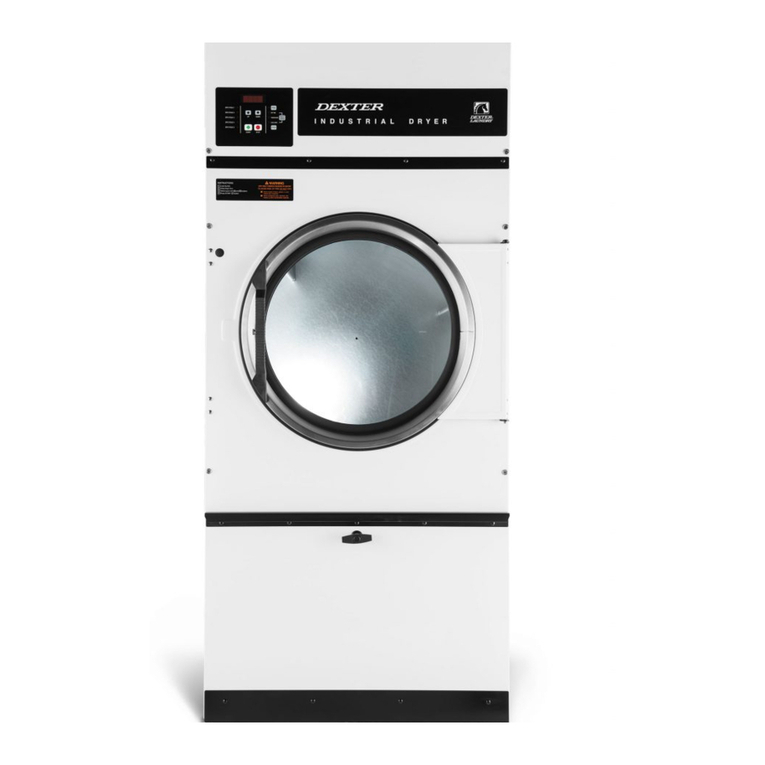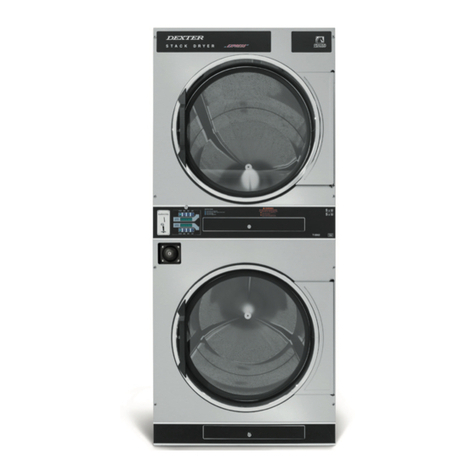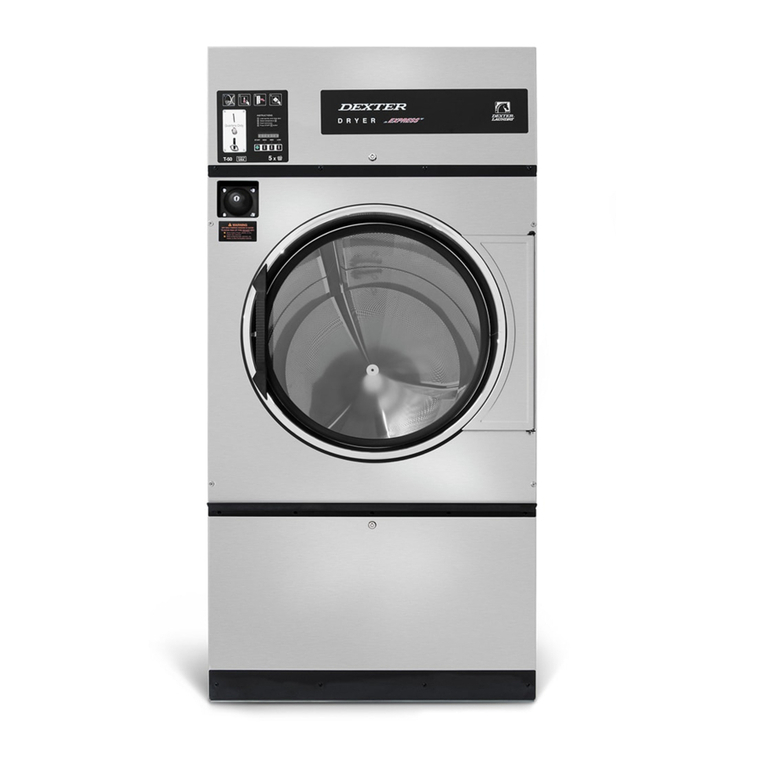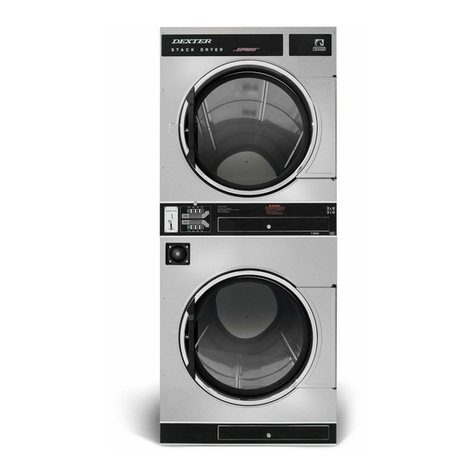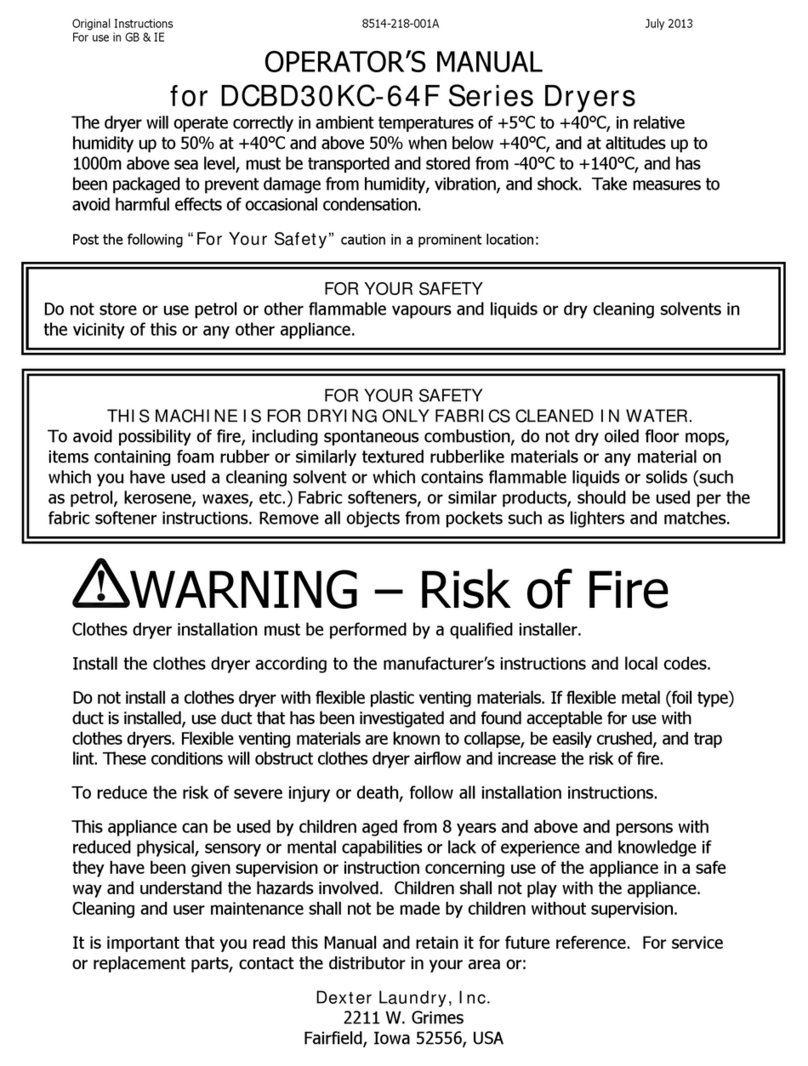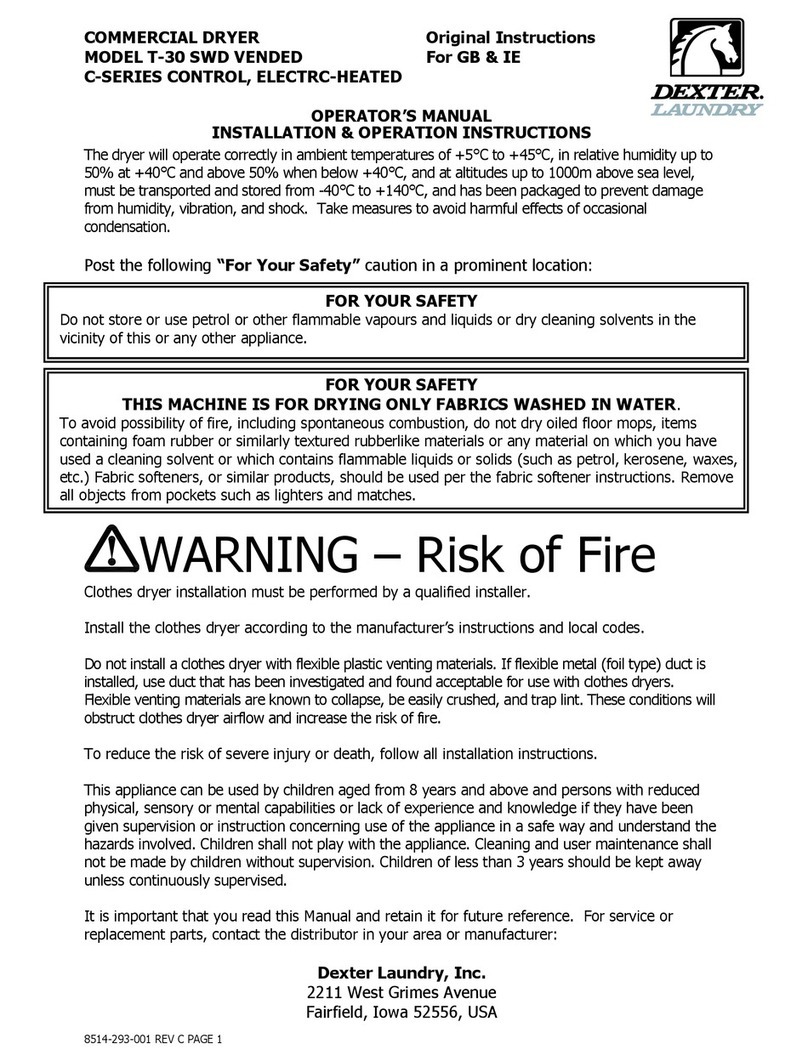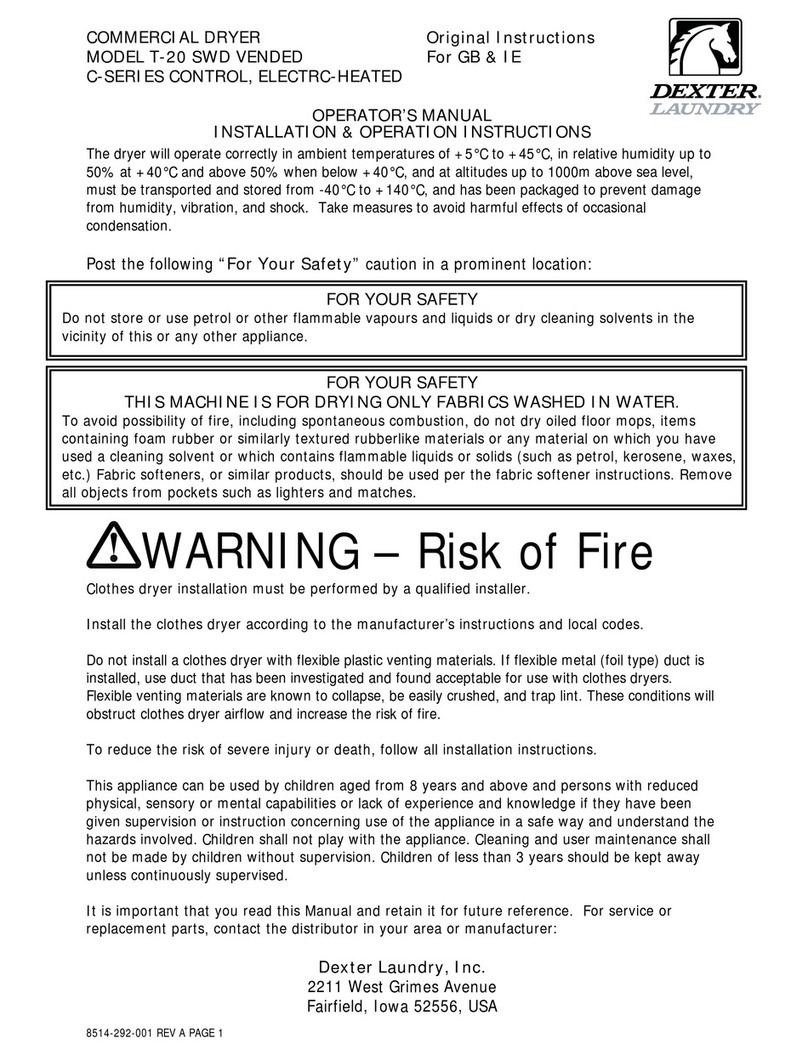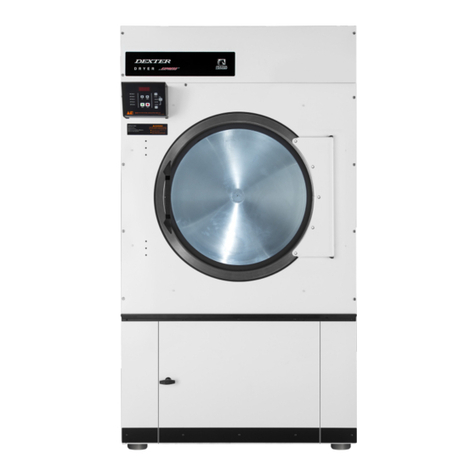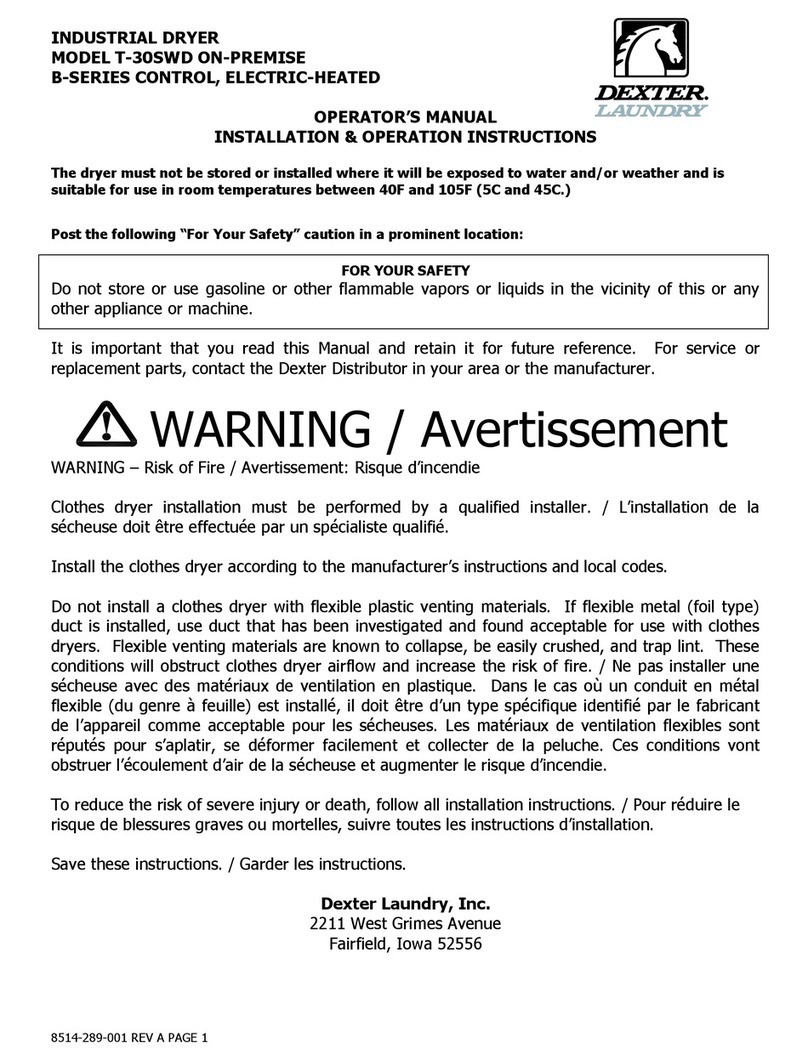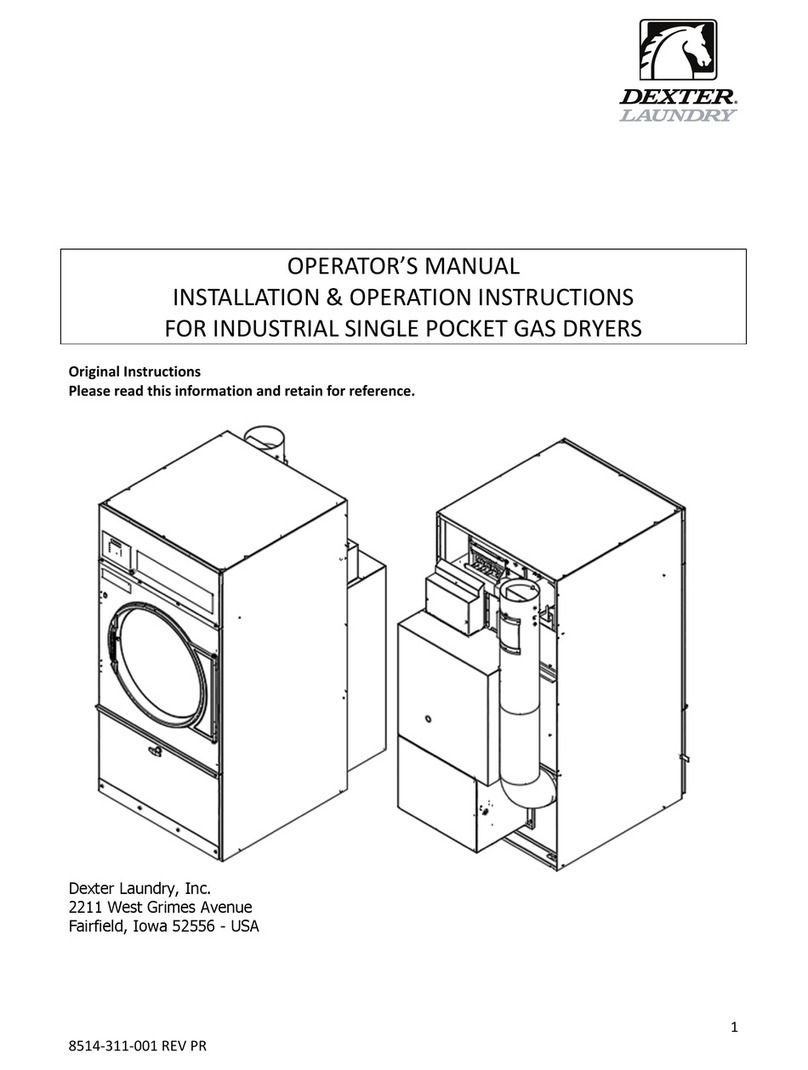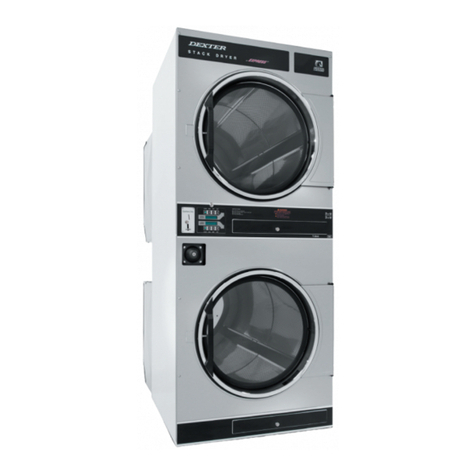
End of Cycle ............................................... 53
Wiring Diagram for DDAD Dryer ................... 54
Wiring Schematic for DDAD Dryer ................ 55
Section 5:
Service Procedures
Clothes Door Removal ................................. 58
Clothes Door Latch Adjustment .................... 58
Door Switch Removal and Installation ........... 58
Installation of Clothes Door Window and Gasket .
58
High Limit Thermostat Locations and Functions ..
58
Pressure Regulator Adjustment .................... 59
Coin Acceptor Removal................................ 59
Coin Switch Adjustment ............................... 59
Heat Sensor................................................ 59
Electronic Control Diagnostic Lights .............. 59
Electronic Control Test Cycle ........................ 60
Electronic Control Removal .......................... 60
Membrane Switch Replacement.................... 60
Temperature Sensor Testing ........................ 60
Temperature Testing ................................... 60
Temperature Sensor Removal....................... 60
Upper Front Panel Removal.......................... 61
Lower Front Panel Removal.......................... 61
Final Drive Belt Replacement........................ 61
Motor Drive Belt Replacement ...................... 61
Tumbler Pulley Removal and Installation ....... 61
Intermediate Pulley and Tension Arm Removal
.. 61
Tension Arm Support Assembly Adjustment .. 61
Motor and Blower Assemly Removal
and Installation ..................................... 61
Air Flow Switch Operation and Adjustment .... 62
Ignition Transformer Fuse ............................ 62
Ignition Control Transformer ........................ 62
Electronic Ignition Module............................ 62
Spark Electrode Assembly Function .............. 63
Ignition System Function and Sequence........ 63
Ignition System Checkout ............................ 63
Spark Electrode Assembly Removal .............. 63
Gas Valve & Manifold Removal ..................... 63
Main Burner Orice Removal ........................ 64
Main Burner Removal................................... 64
Recirculation Chamber Inspection................. 64
Cylinder Removal ........................................ 64
Adjustment of Cylinder Assembly
with Front Panel Removed ..................... 64
Tumbler Through Bolt Access Cover.............. 64
Bearing Housing Removal ............................ 64
Section 6:
Troubleshooting
Quick Guide Troubleshooting ....................... 66
Electronic Control Diagnostic Lights .............. 67
Trouble Shooting Fault Codes....................... 68
Troubleshooting Tips ...............................68-71
Section 7:
Parts Data
Cabinet Group.........................................74-77
Electronic Control Group Front ............ 78 & 79
Door Switch Group ...................................... 80
Bearing Housing Group................................ 81
Burner Housing Group ......................... 82 & 83
Rear View ........................................... 84 & 85
Rear Panel & Cover Group ........................... 86
Tumbler Assembly Group ............................. 87
Control Assembly Group ...................... 88 & 89
Coin Handling Group.................................... 90
Section 8:
Voltage Conversion.....................96 & 97
Section 9:
Maintenance
Regular Required Maintenance ....................100
12 13
Part # 8533-085-001 1/22 Part # 8533-085-001 1/22
Notes

